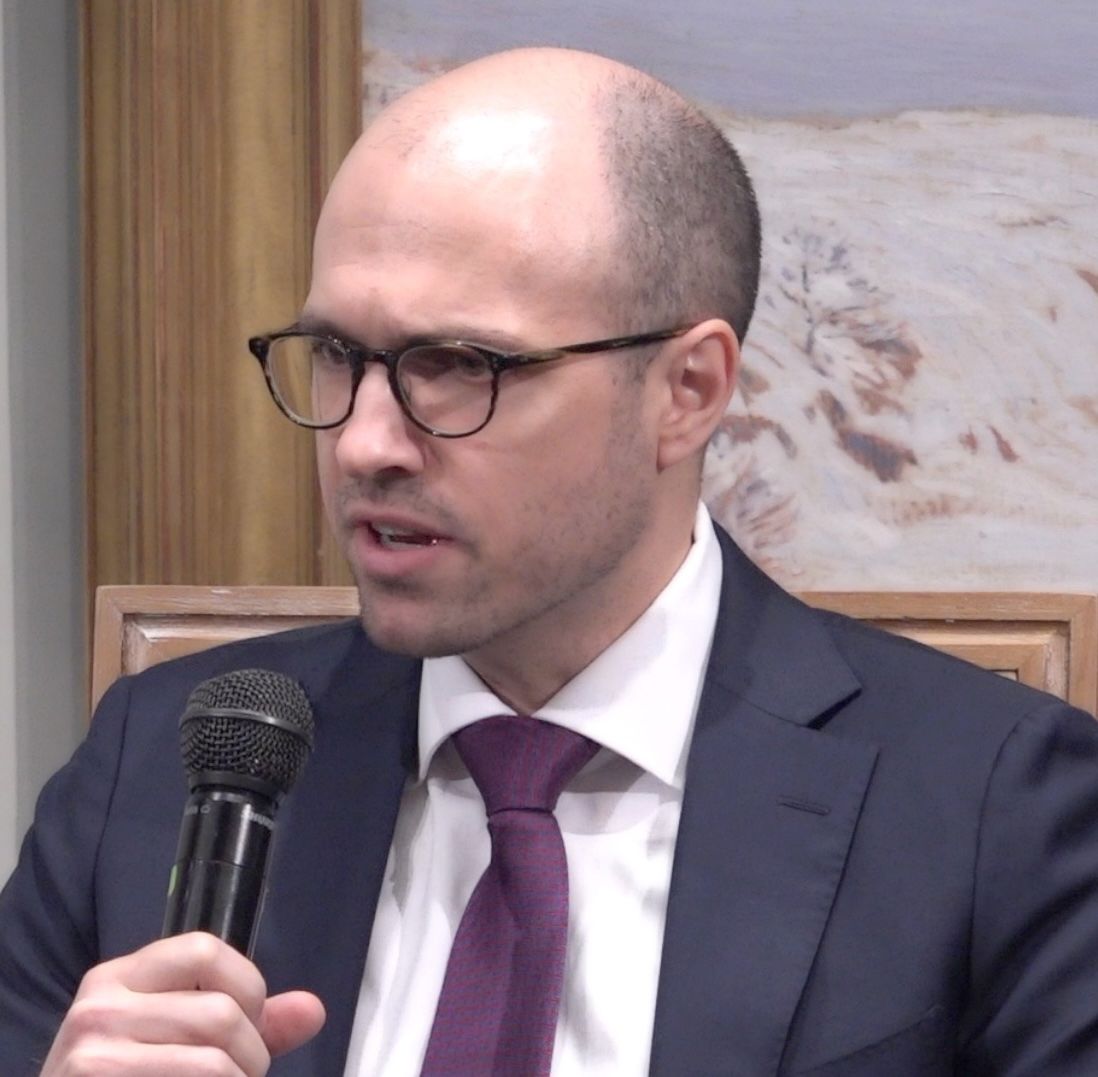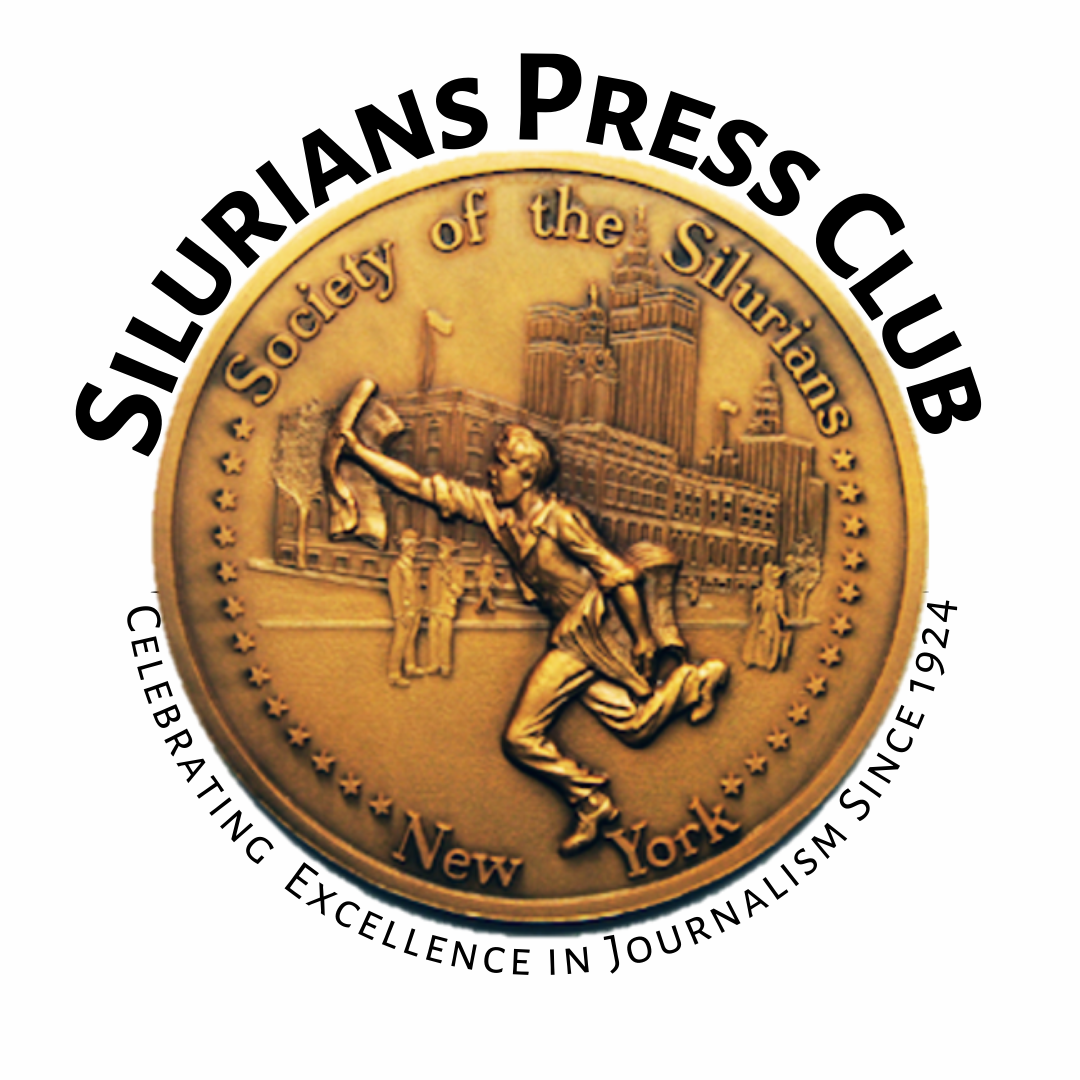
AG Sulzberger
NY Times Publisher Outlines Possible Threats to Press Freedom Under Trump
By Mel Laytner
AG Sulzberger, the publisher of The New York Times, issued a stark warning about the dangers that the incoming Trump administration could pose to press independence, describing methods used by authoritarian leaders worldwide to illustrate the risks.
Speaking to packed audience at the Silurians Press Club on Jan. 15, Sulzberger didn’t mince words. “We’re in a period of prolonged and fairly intense democratic erosion,” he began, setting the stage for a critical conversation about the fragile state of press freedom.
Sulzberger outlined a troubling pattern in a wide-ranging conversation with Silurians past president Joe Berger, himself a former Times reporter and editor for 30 years. Authoritarian leaders in democratic countries, Sulzberger said, cannot engage in overt censorship. Instead, they have adopted more subtle methods of undermining the press. These, he said, are designed not just to silence criticism but to normalize distrust and undermine the press’s role as a watchdog.
Sulzberger was expanding on his op-ed in The Washington Post published last September, where he dissected four key tactics—or “levers”—used to curtail journalism.
The first, he said, was creating a hostile climate for journalists. “Governments foster public distrust and enable harassment, often online, making it perilous to expose truths about powerful institutions” Sulzberger cited the relentless attacks faced by Times reporter Maggie Haberman as a chilling example.
The second lever, weaponizing the civil court legal system, was as pernicious. “Defamation lawsuits are a favorite tool of intimidation,” he said, detailing cases where journalists were buried under a barrage of lawsuits, as seen in Brazil and India. “Even when these cases fail, the financial strain they impose can be crippling.”
Next, Sulzberger described how bureaucratic authority can be misused to target news media outlets. A recent tax raid on the BBC’s India offices following a critical documentary on Prime Minister Narendra Modi served as a prime example. “It’s not about armed officers storming newsrooms,” he said. “It’s about using red tape to disrupt operations and access confidential records.”
Finally, he discussed the co-opting of independent media by political allies. When governments encourage their supporters to acquire news outlets and turn them into propaganda machines, he said, the damage is twofold: independent reporting is stifled, and the public is fed distorted narratives.
Sulzberger’s warnings were not abstract. He drew direct parallels to the United States, particularly during the last Trump administration. He pointed to the Justice Department’s 2020 seizure of New York Times journalists’ records and the growing number of defamation lawsuits as alarming signs.
“These are not isolated incidents,” he said. “They’re part of a broader trend to misuse the legal and regulatory systems to discourage accountability.”
The implications, Sulzberger said, are dire. “The playbook is already written It’s just waiting to be implemented.”
Amid these challenges, Sulzberger reflected on the advantages of The New York Times’s unique ownership model. Unlike corporate-owned competitors, the Sulzberger family’s singular focus on the paper provides clarity and resilience.
“We have all our eggs in one basket, and that basket is The New York Times,” he said. “Our family feels we were put on this earth to support this institution, its journalistic mission, and the people who make that journalism possible.”
While acknowledging that other media ownership models have their merits, Sulzberger stressed the simplicity and integrity of a family-run enterprise. “We literally have our control of the company in a trust that has a mission to protect the editorial independence and integrity of the Times, ensuring it remains an independent newspaper entirely fearless and unselfishly devoted to the public welfare.”
Sulzberger pointedly refrained from criticizing other media owners who have faced scrutiny for perceived compromises despite being pressed from members of the Silurians audience.
“This is a time when we need more institutions, not fewer, standing up for journalistic values,” he said, emphasizing the importance of solidarity within the industry. “Our country is weaker without a strong Washington Post or LA Times, and so is our profession.”
He outlined the steps the Times was taking, including enhancing source protection protocols and building a financial war chest.
“We're probably the first institution in American history that's gone to our tax accountants and said, ‘look, we want to pay more taxes’,” he said. “We want to be a good few yards away from the line.”
Concluding his remarks, Sulzberger’s tone shifted to one of resolve. “This is a more important time than any in my career for the press to show resilience,” he said. “These tactics are designed to discourage us. We cannot let them succeed.”


